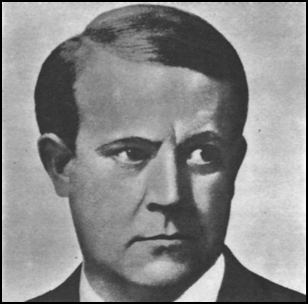
Sunday, February 1, 1942
In Norway... German authorities here appoint Major Vidkun Quisling as the head the Nazi controlled government in Norway. (In English, his name has become synonymous with traitor.)
In the Pacific... Under the command of Admiral Halsey and Fletcher, American task forces attack Japanese held air bases in the Marshall and Gilbert Island. The US aircraft carrier Enterprise is damaged during the attacks.
In North Africa... British General Ritchie orders the English 8th Army to withdraw to the Gazala line.
In South Africa... Two bombs are planted in Johannesburg.
Monday, February 2, 1942
In Egypt... The Cabinet resigns after a dispute with King Farouk regarding his pro-Axis sympathies.
In the Dutch East Indies... Japanese forces overcome Dutch and Australian forces on Amboina Island.
In London... The British Naval Staff reports that the German battlecruisers Gneisenau and Scharnhorst will probably attempt to leave Brest, in occupied France, and pass up the English Channel through the Straits of Dover.
Tuesday, February 3, 1942
In the East Indies... Major Japanese attacks on Java. Surabaya and other bases are struck. Port Moresby in New Guinea is bombarded.
In North Africa... The British evacuate Derna.
Wednesday, February 4, 1942
In the Dutch East Indies... Dutch and American ships attacking in the Makassar Straits are repelled by Japanese aircraft. Two American cruisers are damaged in the fighting.
In Malaya... Japan demands the surrender of Singapore. British authorities there refuse. General Wavell continues to bring in reinforcements despite the overwhelming odds against success in battle against the Japanese. Wavell wants the island to hold while Allied forces elsewhere in the East Indies are being strengthened.
Thursday, February 5, 1942
In the South China Sea... The British troop transport Empress of Asia (16,400 tons) is sunk by Japanese bombers off the coast of Singapore.
In Washington... The United States declares war on Thailand.
In Moscow... President Kalinin predicts in a radio broadcast that all the occupied republics of the Soviet Union will soon be recovered.
Over Occupied France... The British RAF drops 1.4 million copies of 2 American leaflets, describing scale of the US arms program, over 8 French cities and towns.
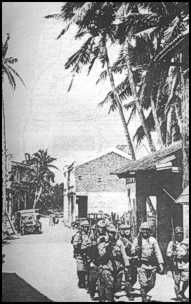
Friday, February 6, 1942
In the Philippines... Japanese reinforcements land on Luzon. In the Bataan peninsula there is a lessening of the fighting.
In Washington... The first meeting of the Combined Chiefs of Staff, as defined by the Arcadia Conference, takes place.

Saturday, February 7, 1942
From Germany... The German Minister of Munitions Todt, is killed in an airplane crash. Albert Speer, Hitler's architects is appointed to replace him. Todt has been responsible for attempting to place Germany's economy on a war footing. Speer will continue to push these policies. At this point, the German economy is still producing consumer goods at almost a prewar level although recent reversals in the USSR and Todt's polices are being to change the situation.
In North Africa... Rommel's Afrika Korps halts its advance near Gazala. They have recaptured almost all of the territory the British had taken in 1941. The British 1st Armored Division is in disarray and the morale of the British 8th Army is sinking.
On the Eastern Front... Soviet forces attack Rzhev, to the west of Moscow.
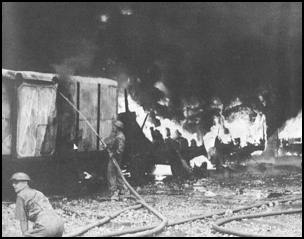
Sunday, February 8, 1942
In Malaysia... The Japanese invade Singapore after a day of air bombardment. Troops of the Japanese 5th, 18th and Imperial Guards Divisions land on the northwest of the island in the area defended by the 22nd Australian Brigade. The garrison at this point is almost 85,000 strong including support troops. The Japanese have successfully avoided the large guns at the fortress on Singapore as they were designed to defend against a direct sea borne attack.
In the Philippines... Japanese General Homma, halts his main attacks to await further reinforcement. Some heavy fighting, however, continues.
Monday, February 9, 1942
In the Dutch East Indies... Japanese aircraft raid airfields near Batavia, the capital.
In Burma... Japanese forces cross the Salween River.
In the United States... The troop transport Lafayette (83,000 tons) -- previously the French liner Normandie -- catches fire in New York harbor.
In Britain... Soap is rationed to 4 oz (113 g) for household use or 2 oz (56 g) for toiletry use per person per month.
In Canada... In four by-elections the "anti-conscription" candidates are heavily defeated.
In Delhi... Chiang Kai-shek visits.
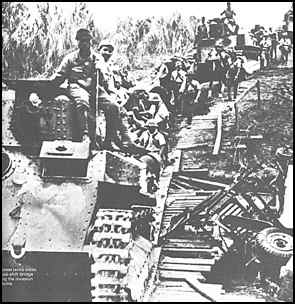
Tuesday, February 10, 1942
In Burma... The Japanese cross the Salween River near Martaban and Pa-an.
In Malaya... Due to confusion, the Allied forces on Singapore Island facing Japanese attack withdraw farther than needed, abandoning strongholds along the Jurong Line. Fighting continues on the island.
In London... The first meeting of the Pacific War Council is held. Representatives from Britain, New Zealand, Holland and Australian attend.
In the United States... The Lafayette capsizes in New York harbor after catching fire on Monday.
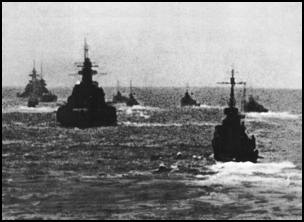
Wednesday, February 11, 1942
In the English Channel... The Channel Dash. Two German battle cruisers, Scharnhorst and Gneisenau accompanied by the heavy cruiser Prinz Eugen make a successful run to their home port from Brest with minimal damage from British naval forces. However, both battle cruisers are damaged by mines, the Schnarhorst seriously. The Gneisenau takes to dock for minor repairs and becomes the target of a bombing raid, coded named Cereberus, commanded by Admiral Ciliax. The bombing raid proves successful and the Gneisenau is seriously damaged in port.
In Malaya... The Allied counterattack against the Japanese invaders fails with heavy losses. The Allies must retreat to their final perimeter around the city itself.
Thursday, February 12, 1942
In the South Pacific... The Anzac Squadron is formed at Suva in Fiji. It includes the cruiser Australia, USS Chicago, Achilles and Leander as well as two American destroyers.
In Seville... Spanish dictator Franco and Portuguese dictator Salazar meet.
In the Mediterranean... At Malta, the British destroyer Maori is bombed and sunk.
In the United States... Noted artist Grant Wood dies at age 49. He is known for his depiction of Mid-Western farm folk in paintings such as "American Gothic".

Friday, February 13, 1942
On the Eastern Front... The Soviet winter offensive continue to meet increasing German resistance. Despite this, their spearhead have reached Belorussia.
From Germany... The official cancellation of Operation Sea Lion-- the invasion of Britain -- is announced. Previously it had merely been postponed.
Saturday, February 14, 1942
From London... The Area Bombing Directive is issued to the RAF Bomber Command. It states that raids "should now be focused on the morale of the enemy civil population and, in particular, of the industrial workers." This represents a substantial shift in policy and targets civilian residential areas rather than factories.
In the East Indies... Japanese paratroopers land at Palembang on Sumatra. Admiral Ozawa's main body, the Western Force are en route to the island.
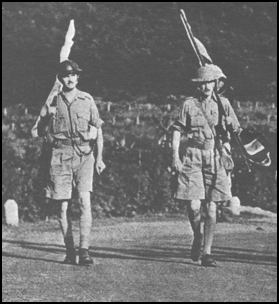
Sunday, February 15, 1942
In Malaya... The Allied defense perimeter is now a small area around the city of Singapore. Water and ammunition are in short supply. The Japanese control the water reservoir. General Percival decides to surrender and Japanese General Yamashita accepts his terms. Japanese losses in the Malayan campaign have been 10,000. British and Allied losses 138,000.
In the East Indies... Japanese reinforcements arrive in time to prevent the destruction of the oil refinery at Palembang by retreating Allied soldiers.
In Burma... Forward units of the 17th Indian Division are pulled back west of the Bilin River as the Japanese have now crossed the Salween River in force.

Monday, February 16, 1942
In the Caribbean... German U-boats shell the oil installations at Aruba. Seven tankers are sunk by German torpedoes.
In Tokyo... General Tojo, the Japanese premier, announces his war goals to the Diet (the Japanese parliament). He speaks of a "new order of coexistence and co-prosperity based on the ethical principles of Greater East Asia."
In Burma... Fighting continues along the Bilin River as the Japanese continue their advance.
Tuesday, February 17, 1942
In the South Pacific... Japanese submarine I-25 launches a Yokosuka seaplane on a reconnaissance flight over Sydney, Australia.
In London... The House of Commons holds a debate on the escape of the German cruisers from Brest. Churchill announces the formation of a commission of inquiry under Mr. Justice Bucknill.
In Occupied Singapore... The Japanese authorities rename the island city Shonan (meaning "Light of the South").
Wednesday, February 18, 1942
In the Dutch East Indies... British RAF and Australian RAAF units are withdrawn from Sumatra to Java.
In the Gulf of Mexico... The Free French submarine Surcouf (then the largest submarine in the world) is sunk in a collision with a US merchant ship.
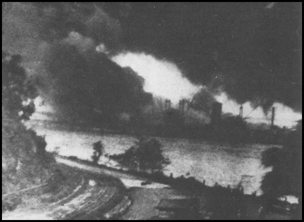
Thursday, February 19, 1942
In Australia... 150 Japanese aircraft from four of the carriers which fought at Pearl Harbor, attack Darwin in Northern Australia. The attack damages harbor installations and sinks a number of warships.
From Washington... General Dwight D. Eisenhower, is appointed chief of the War Plans Division of the US Army General Staff.
In Vichy France... After their arrest by the order of Marshal Petain, General Gamelin and former Prime Ministers, Reynaud and Blum are put on trial for the French loss in this war. The defendants present evidence which tends to implicate the entire French military establishment, many of whom are now serving in the Vichy Government. The trial is adjourned and never completed.
In London... Prime Minister Churchill announces War Cabinet changes. Sir Stafford Crippins, former ambassador to Moscow, replaces Arthur Greenwood and Sir Kingsley Wood.
In the East Indies... The Japanese continue their expansion with the invasion of Bali.
Friday, February 20, 1942
In the Bismark Archipelago... Japanese drive off a carrier based task force led by the American aircraft carrier Lexington which attempts to attack Rabaul.
In Portuguese Timor... Japanese forces invade.
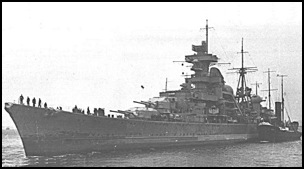
Saturday, February 21, 1942
From Germany... The pocket-battleship Admiral Scheer and the cruiser Prinz Eugen leave for bases in Norway.
In Burma... The British 17th Indian Division begins retreat to the Sittang River through Kyaikto.
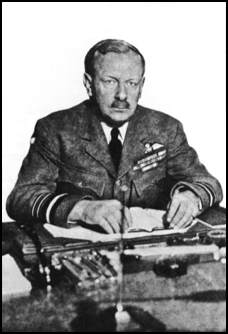
Sunday, February 22, 1942
From London... Air Marshal Harris, is appointed head of Bomber Command. He will be responsible for implementing the new policy of "civilian target" bombing from the Air Ministry.
From Washington... General Douglas MacArthur is ordered to leave the Philippines and establish new headquarters in Australia.
In Burma... Japanese troops continue their advances against the British 17th Indian Division at Mokpalin on the Sittang River. Fighting is extremely heavy.
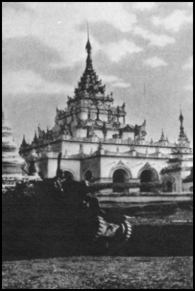
Monday, February 23, 1942
In Burma... A large part of the British 17th Indian Division is trapped on the east bank of the Sittang River when the only accessible bridge is destroyed. Most of the troops escape to the other side of the river, but all of their heavy equipment is lost.

Tuesday, February 24, 1942
On the Eastern Front... The Soviet Winter Offensive is slowing in the face of greater German resistance. In the north, the Red Army have encircled German 2nd Corps of the German 16th Army, just south of Lake Ilmen in the Demyansk region. The entrapped German troops will hold until relieved in April because the Luftwaffe manages to drop 270 tons of supplies to them daily.
On Wake Island... Admiral Halsey on board the USS Enterprise leads task force in a successful attack on Wake Island.

Wednesday, February 25, 1942
From London... The American, British, Dutch, Australian Command (ABDA) is dissolved. General Wavell again becomes the Commander in Chief, India. The Dutch General Ter Poorten takes command in Java.
Thursday, February 26, 1942
From Washington... Soviet Ambassador Litvinov demands the Allies open a second front. He states that "only by simultaneous offensive operations on two or more of the fronts can Hitler's armed forces be disposed of."
On the Eastern Front... The Red Army engages the German 16th Army near Starya Russa, inflicting heavy casualties.
In Burma... the Japanese cross the Sittang River and now threaten to capture the Rangoon-Mandalay railway.
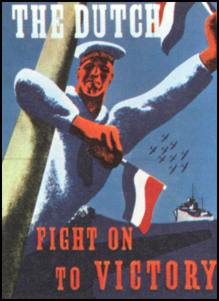
Friday, February 27, 1942
In the Pacific... The Battle of the Java Sea. Allied Admiral Doorman commanding a four nation task force of five cruisers and eleven destroyers attempts to engage a Japanese invasion force commanded by Admiral Takagi on its way to Java. In a series of running engagements (February 27-28th), the Allied force is almost totally destroyed.
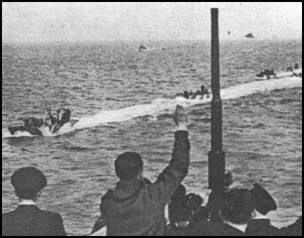
Saturday, February 28, 1942
In Occupied France... British commandos stage a raid a Bruneval for the purpose of taking German radar equipment back to Britain for examination. It is successful.
Copyright © 2018 Ralph Zuljan
